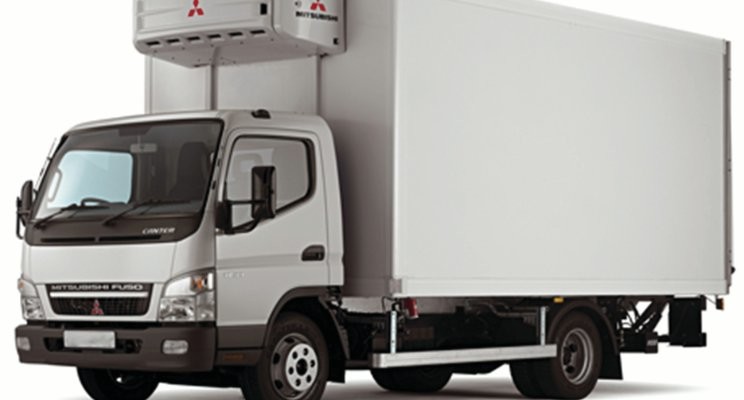Complete Guide to Leading Transport Refrigeration Companies
Complete Guide to Leading Transport Refrigeration Companies
Blog Article
How Chilled Trucks Operate to Guarantee Safe and Effective Delivery of Perishable Item
Cooled trucks play a vital role in the supply chain, ensuring that disposable goods are transferred securely and efficiently. Using innovative refrigeration modern technologies and robust insulation, these automobiles preserve exact temperature level control, which is crucial for maintaining the quality of sensitive products.
Introduction of Refrigerated Trucks
Refrigerated trucks, often referred to as reefer trucks, play an important role in the transport of disposable goods across different sectors. These specific vehicles are created to preserve certain temperature level ranges, guaranteeing that items such as fresh produce, milk products, meat, and pharmaceuticals continue to be secure for usage and effective use. The procedure of refrigerated trucks is vital in lowering spoilage and extending the rack life of temperature-sensitive products.
Reefer vehicles are equipped with protected cargo areas that are capable of sustaining reduced temperatures, which can be adjusted according to the type of goods being delivered. The lorries normally use a refrigeration device powered either by the car's engine or an independent source of power, permitting consistent temperature control during transportation.
In enhancement to temperature level maintenance, these vehicles are typically developed with innovative tracking systems to track the inner setting, making sure conformity with wellness and safety policies. Cooled vehicles add substantially to the supply chain, enabling timely shipments to restaurants, consumers, and merchants. Their critical role highlights the relevance of reliable transportation options in today's international market, where freshness is paramount.
Key Refrigeration Technologies
Keeping optimal temperature control in refrigerated trucks counts on a number of key refrigeration technologies that improve efficiency and reliability. Among one of the most usual systems is the vapor-compression refrigeration cycle, which uses a refrigerant to soak up warm from the vehicle's inside, decreasing the temperature level. This procedure entails a compressor, condenser, growth valve, and evaporator, operating in tandem to distribute the refrigerant and preserve a constant environment.
One more significant innovation is making use of eutectic plates, which keep and launch thermal energy. These plates are loaded with a phase-change material that strengthens at a certain temperature, giving a stable air conditioning source. This technique not only enhances energy performance but additionally minimizes the demand for continual power supply during transit.
Additionally, advanced insulation materials, such as polyurethane foam, substantially boost the thermal performance of cooled trucks, reducing temperature level changes during discharging and packing. Some modern-day chilled vehicles additionally include telematics systems, allowing for real-time monitoring of temperature level and efficiency, therefore making certain compliance with safety and security criteria. Together, these modern technologies guarantee the risk-free transport of disposable goods while maximizing operational performance and decreasing energy usage.
Temperature Control Devices
Effective temperature level control mechanisms are essential in making sure the stability of disposable goods throughout transport. Cooled vehicles use innovative innovations to preserve constant temperature level varieties, stopping perishing and making sure product safety - cold transport companies.
In addition, contemporary refrigerated trucks are outfitted with electronic thermometers and programmable temperature tracking systems. These systems enable for real-time monitoring of inner temperature levels, supplying informs if the temperature level differs the established variety. This ability is necessary for compliance with wellness and safety laws.
Insulation also plays a pivotal duty in temperature control. Top quality insulation materials lessen warmth exchange, preserving the wanted interior conditions. Moreover, airflow management within the freight area is engineered to guarantee consistent temperature level distribution, avoiding hotspots that can jeopardize product stability (refrigerated truck companies).
Best Practices for Packing

First, it is essential to pre-cool the vehicle before filling. This practice permits the temperature level control system to stabilize, creating an ideal atmosphere for perishable items. Next, products must be loaded in a fashion that advertises air movement. Prevent overloading and obstructing vents, as this can bring try here about temperature level variations and hotspots.
Utilizing pallets or shelving can aid in arranging products, making sure that heavier items are placed at the base to prevent crushing lighter products. Additionally, it is crucial to segregate various sorts of items, specifically those with varying temperature needs, to avoid cross-contamination and perishing.
Lastly, protecting the lots with internet or bands will certainly stop motion throughout transportation, therefore reducing the danger of damage and preserving the integrity of temperature-sensitive items. By adhering to these finest techniques, drivers can guarantee secure and reliable delivery of disposable products while maximizing the efficiency of their refrigerated trucks.
Difficulties and Solutions in Transportation
One considerable problem is temperature level variations, which can happen due to equipment breakdown or improper packing methods. In addition, you can try these out road conditions and delays can further worsen temperature control issues, specifically during expanded transit times.
Advanced telemetry can provide real-time temperature level data, signaling drivers to any type of anomalies. Training personnel on best loading and dumping techniques can lessen the danger of temperature level discrepancies.
An additional secret solution includes path optimization. Making use of web general practitioners and web traffic administration technologies can aid vehicle drivers pick one of the most reliable paths, decreasing transportation times and decreasing direct exposure to unfavorable conditions. Working together with trustworthy logistics partners that focus on chilly chain stability is additionally important for guaranteeing that products remain within called for temperature ranges.

Verdict
In final thought, cooled vehicles play a vital function in the effective and secure transport of perishable products. Using innovative refrigeration innovations and effective temperature control mechanisms guarantees that products continue to be within called for temperature level varieties.

Report this page